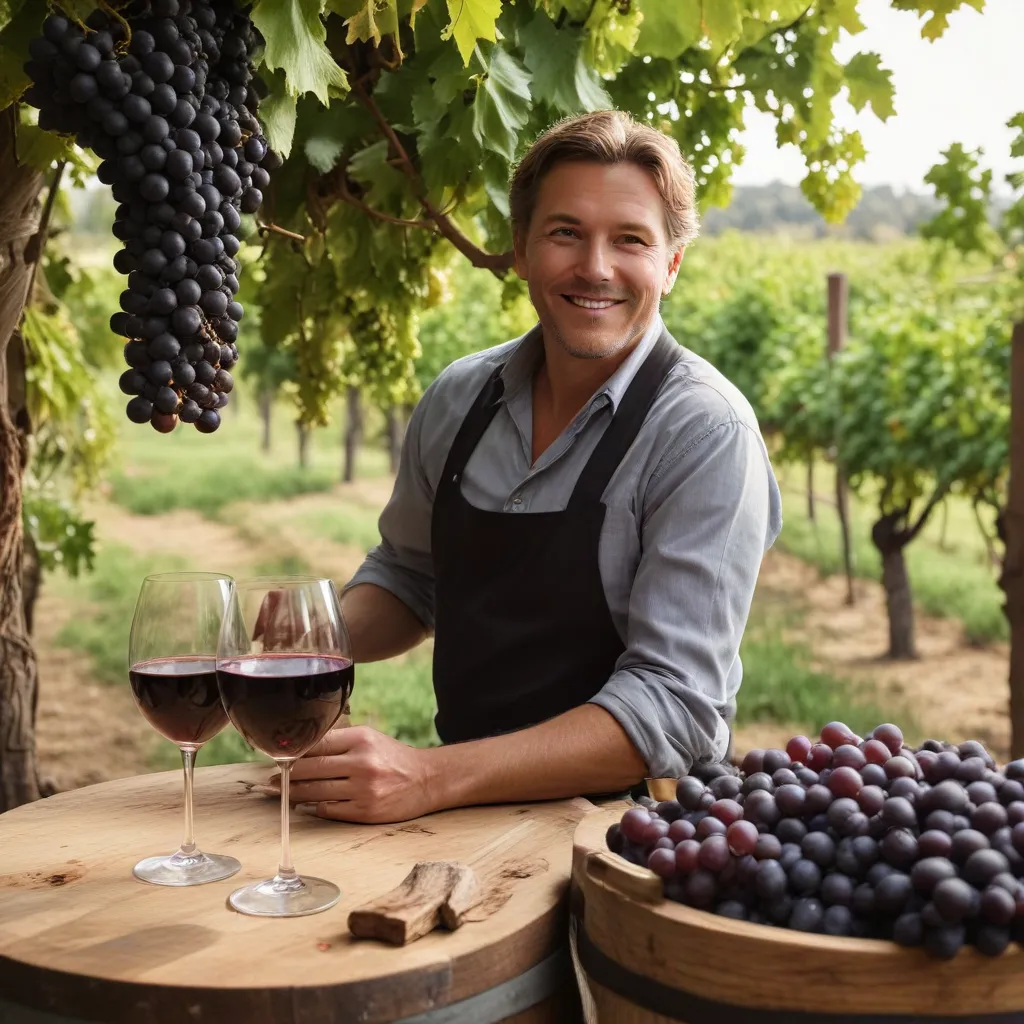
Winemaking is a captivating dance between science and art, where the grape’s journey from soil to glass tells a story of nature, innovation, and human passion. As a hospitality and wine expert at the Wine Garden Inn, I’m honored to guide you through this enchanting process – from the careful cultivation of the vine to the final, sublime sip.
The Winemaking Process
Grape Cultivation
The winemaking journey begins in the vineyard, where the vintner meticulously nurtures each vine. Here, science and intuition intertwine as they study the soil composition, monitor microclimates, and draw upon generations of viticultural wisdom. Decisions on pruning, pest management, and the perfect harvest time are crucial, as they directly influence the wine’s flavor profile and structure.
The concept of terroir – the unique blend of soil, climate, and geography – is paramount in shaping a wine’s character. Each region, even each individual vineyard, possesses its own distinct terroir that imparts subtle yet profound qualities to the grapes. Understanding and respecting these nuances is the mark of a skilled viticulturist.
Grape Harvesting
As the grapes reach optimal ripeness, the winemaker must carefully time the harvest. This delicate balance is determined by measuring the grapes’ sugar content (Brix) and acidity levels, as well as observing the fruit’s color and flavor development. The perfect moment to pick can mean the difference between a bold, structured wine and a delicate, fruit-forward one.
The harvesting process itself is a symphony of coordination, with teams of skilled workers meticulously hand-picking the grapes to preserve their integrity. The utmost care is taken to ensure the grapes arrive at the winery in pristine condition, ready for the next stage of transformation.
Grape Processing
Upon arrival at the winery, the grapes undergo a series of processing steps that lay the foundation for the wine’s character. First, they are gently crushed, releasing the juice (must) while leaving behind the skins, seeds, and stems. This crucial step sets the stage for fermentation, where the real alchemy begins.
Winemaking Techniques
Fermentation
Fermentation is where science and nature collide, as the must interacts with carefully selected yeast strains. These microscopic workhorses convert the grape sugars into alcohol, carbon dioxide, and a myriad of aromatic compounds. The winemaker’s expertise lies in managing the temperature, duration, and other variables of this process to coax out the desired flavors and aromas.
For red wines, the skins often remain in contact with the must during fermentation, extracting tannins, color, and additional complexity. White wines, on the other hand, are typically fermented with minimal skin contact to preserve their delicate, fruit-forward character.
Aging and Maturation
After fermentation, the wine begins its journey of aging and maturation, where the winemaker’s artistry shines. The choice of aging vessel – be it oak barrels, stainless steel tanks, or a combination thereof – can impart distinctive flavors and textures to the wine.
Oak barrels, in particular, offer a nuanced influence, with their variety of toast levels, cooperage techniques, and even the origin of the wood contributing unique characteristics. Malolactic fermentation, a secondary fermentation that softens the wine’s acidity, is another important step during this phase.
Blending and Bottling
The final stage of the winemaking process is blending and bottling, where the winemaker’s vision for the wine is realized. By skillfully blending different grape varieties, batches, or even vintages, the winemaker can create a harmonious and complex final product.
The bottling process is equally crucial, as it seals in the wine’s delicate balance of flavors and aromas, preserving them for the consumer to enjoy. From the choice of bottle shape and closure to the label design, every detail is meticulously considered to reflect the wine’s character and the winery’s identity.
Wine Varietals
Red Wines
The world of red wines is a tapestry of bold, complex flavors and structures. From the velvety Merlots to the powerful Cabernet Sauvignons, each varietal offers a unique expression of the grape’s potential. Winemakers may also blend these grapes to create even more intricate and layered red wines.
White Wines
The spectrum of white wines ranges from the crisp, refreshing Sauvignon Blancs to the rich, creamy Chardonnays. Grape varieties like Riesling, Pinot Grigio, and Gewürztraminer each contribute their own distinct aromas and flavors, showcasing the versatility of white wine.
Rosé Wines
Rosé wines have gained immense popularity in recent years, captivating wine enthusiasts with their vibrant hues and delicate, fruit-forward profiles. Crafted from red grape varieties, rosés can range from the lightest, most delicate shades to deeper, more structured expressions.
Wine Regions and Terroir
Old World Wines
The renowned wine regions of Europe, often referred to as the “Old World,” have a deep-rooted history and tradition that is reflected in their wines. From the lush vineyards of Bordeaux to the sun-kissed slopes of Tuscany, each area boasts a unique terroir that shapes the character of its wines.
New World Wines
The “New World” of winemaking, encompassing regions like California, Australia, and South America, has emerged as a dynamic and innovative force in the global wine scene. Winemakers in these regions often embrace a more experimental approach, showcasing the diversity of grape varieties and blending techniques.
Terroir Influences
The concept of terroir is the cornerstone of understanding the distinct flavors and aromas found in wines from different regions. Factors such as soil composition, climate, elevation, and even the unique microclimates within a single vineyard can profoundly influence the development of the grapes and, ultimately, the character of the wine.
Exploring the world of wine is akin to embarking on a journey of discovery, where each bottle unveils a new story of the land, the people, and the art of winemaking. As you savor your next glass, remember the intricate dance of science and creativity that has brought it to your table. At the Wine Garden Inn, we are honored to share this passion for wine and the rich tapestry of flavors that grace our culinary delights.
